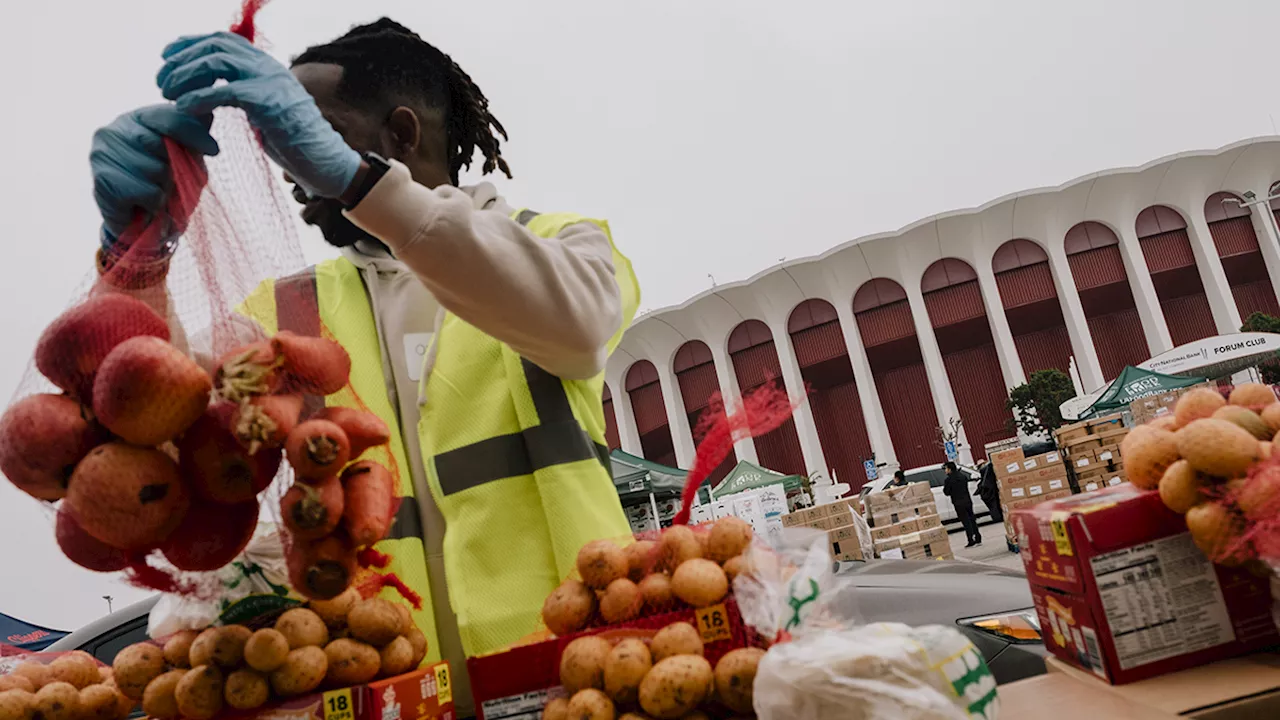Health
Millions Face SNAP Benefit Cuts: How You Can Help Now

The Supplemental Nutrition Assistance Program (SNAP) has experienced significant disruptions, leaving millions of recipients facing delayed or reduced benefits for the first time. On November 1, 2023, many individuals and families relying on SNAP, commonly known as food stamps, did not receive their monthly assistance. Just two days later, the government announced that payments would resume but at approximately half the normal amount, along with considerable delays.
Funding for this limited restart comes from a temporary pool established by the United States Department of Agriculture (USDA). Experts warn that these contingency funds are unlikely to last long, raising concerns about the sustainability of support for low-income families. Each state administers SNAP independently, meaning they may need to develop new systems to manage these reduced benefits. Many of the personnel needed for this task are currently unavailable.
In addition to these logistical challenges, the existing benefits do not fully cover the rising costs of basic groceries. Prices for essential items such as milk, eggs, and meat have surged, widening the gap between the benefits provided and the actual costs. As a result, organizations like Rethink Food have reported a staggering 300% increase in demand for food assistance over the past week alone. The increase in need particularly affects vulnerable populations, including children, seniors, and multigenerational families. Contrary to common misconceptions, many SNAP recipients are full-time workers striving to make ends meet.
Understanding SNAP’s Impact and Coverage
SNAP plays a crucial role in supporting low-income households by enabling them to purchase nutritious food. Despite the significant assistance it provides, many recipients find that the benefits do not cover the full cost of living, especially in light of recent inflation. The current crisis has exacerbated food insecurity for millions, leading to increased reliance on food pantries, distribution hubs, and community fridges.
In response to the ongoing challenges, various businesses, churches, and nonprofit organizations are stepping up to provide free meals and food assistance to those affected by the SNAP delays. These initiatives aim to alleviate some of the immediate pressures faced by individuals and families struggling to put food on the table.
Ways to Help and Seek Assistance
If you are looking to assist those impacted by the SNAP benefit reductions, consider reaching out to local food banks or community organizations that are actively providing support. Many of these groups welcome donations of food or funds to help them meet the rising demand. Additionally, volunteering your time at food pantries or distribution centers can make a meaningful difference in your community.
For those in need of assistance, numerous resources are available. Local businesses and organizations are offering free meals and food packages to those affected by the SNAP delays. It is essential for individuals and families to explore these options to help navigate this challenging period.
As the situation evolves, it remains critical for government agencies and community organizations to work together to ensure that vulnerable populations receive the support they need. The impact of SNAP benefit cuts is not just a financial issue; it is a matter of food security and overall well-being for millions of families across the nation.
-

 Science2 weeks ago
Science2 weeks agoInventor Achieves Breakthrough with 2 Billion FPS Laser Video
-

 Top Stories3 weeks ago
Top Stories3 weeks agoCharlie Sheen’s New Romance: ‘Glowing’ with Younger Partner
-

 Entertainment3 weeks ago
Entertainment3 weeks agoDua Lipa Aces GCSE Spanish, Sparks Super Bowl Buzz with Fans
-

 Business3 weeks ago
Business3 weeks agoTyler Technologies Set to Reveal Q3 Earnings on October 22
-

 Health3 weeks ago
Health3 weeks agoCommunity Unites for 7th Annual Into the Light Walk for Mental Health
-

 Health3 weeks ago
Health3 weeks agoCurium Group, PeptiDream, and PDRadiopharma Launch Key Cancer Trial
-

 World3 weeks ago
World3 weeks agoR&B Icon D’Angelo Dies at 51, Leaving Lasting Legacy
-

 Entertainment3 weeks ago
Entertainment3 weeks agoRed Sox’s Bregman to Become Free Agent; Tigers Commit to Skubal
-

 Entertainment3 weeks ago
Entertainment3 weeks agoMother Fights to Reunite with Children After Kidnapping in New Drama
-

 Health3 weeks ago
Health3 weeks agoNorth Carolina’s Biotech Boom: Billions in New Investments
-

 Science3 weeks ago
Science3 weeks agoNorth Carolina’s Biotech Boom: Billions Invested in Manufacturing
-

 Top Stories3 weeks ago
Top Stories3 weeks agoDisney+ Launches Chilling Classic ‘Something Wicked’ Just in Time for October









